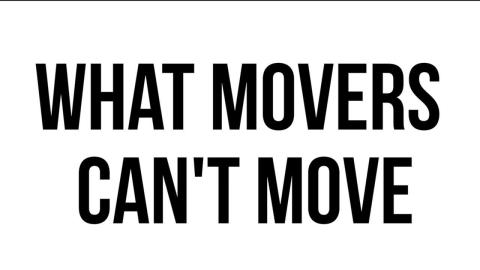Moving is the perfect opportunity to start fresh, and there’s no better way to embrace this new chapter than by decluttering your belongings. Deciding what to keep, toss, or donate can feel overwhelming, but with a strategic approach, you can streamline the process and lighten your load. Here’s a step-by-step guide to help you declutter like a pro before your move.
Step 1: Start Early and Plan Ahead
Decluttering takes time, so give yourself a head start. Begin the process at least six to eight weeks before your move. Tackle one room or category at a time, such as clothing, kitchenware, or books. Set a goal for each session, like filling two donation bags or clearing out a specific closet.
Step 2: The Three-Box Method
As you go through your belongings, sort items into three categories: Keep, Toss, and Donate.
- Keep: Items you use regularly or have significant sentimental value. These should be functional, in good condition, and worth the effort of moving.
- Toss: Items that are broken, damaged, or beyond repair. Recycle where possible, but don’t hold onto things you’ll never use again.
- Donate: Items that are in good condition but no longer serve you. Local charities, thrift stores, and shelters often welcome gently used clothing, furniture, and household items.
Step 3: Ask the Right Questions
If you’re struggling to decide, ask yourself:
- When was the last time I used this?
- Does this item bring me joy or serve a purpose?
- Would I buy this again today?
- Will this fit into my new home or lifestyle?
If you hesitate to answer, it’s likely time to let the item go.
Room-by-Room Decluttering Tips
1. Bedroom
- Keep: Essential clothing, shoes, and accessories you wear regularly.
- Toss: Worn-out shoes, socks with holes, and clothing beyond repair.
- Donate: Clothes that no longer fit, seasonal items you didn’t wear last year, or duplicates.
2. Kitchen
- Keep: Everyday dishes, utensils, and appliances you use often.
- Toss: Expired food, chipped plates, or broken gadgets.
- Donate: Duplicate utensils, rarely used kitchen tools, and unopened non-perishables.
3. Living Room
- Keep: Furniture that fits your new space and decor you love.
- Toss: Broken electronics, outdated cords, or irreparably damaged furniture.
- Donate: Gently used decor, books, or electronics in working condition.
4. Bathroom
- Keep: Daily toiletries and medicines.
- Toss: Expired products, old makeup, and worn towels.
- Donate: Unopened toiletries and gently used items like hairdryers.
Step 4: Dispose of Items Responsibly
- Recycling: Check your local guidelines for electronics, paper, and plastics.
- Donation Centers: Many organizations, like Goodwill and Habitat for Humanity, accept a variety of items.
- Special Disposal: Properly dispose of hazardous materials like paint, batteries, and old medications.
Step 5: Involve the Whole Family
If you’re moving with others, involve everyone in the decluttering process. Children can help decide which toys to keep or donate, and partners can weigh in on shared items. Make it a team effort to reduce stress.
Step 6: Celebrate Your Progress
Decluttering for a move isn’t just about purging belongings—it’s about creating space for the life you’re building. Celebrate your progress by taking a moment to appreciate how much lighter you feel with each load donated or tossed.
Decluttering before a move can transform what might feel like a daunting task into an empowering experience. By deciding what to keep, toss, or donate, you’ll not only simplify your move but also make unpacking in your new home a breeze. Remember, the less you have to move, the more time, money, and energy you’ll save.
Happy decluttering—and happy moving!


